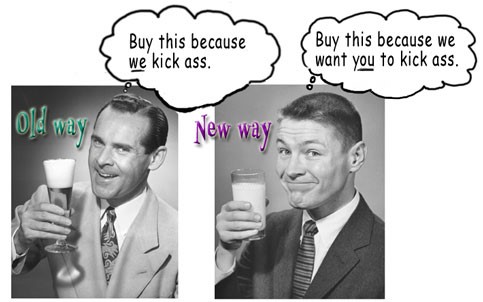You might know a thing or two about web design, but when you’re just starting out, web design can seem like a vast, complicated world full of mysteries (Like, why do you even need a website?!). Even seasoned pros can use a reminder of some simple tips for beginner web design – it’s easy to get caught up in an assumptive mindset!
We’re here to clear up some myths and misconceptions and identify solutions to common web design problems.
Presenting your Hey Now! beginner web design FAQ:
1) Do people read on the web?
MMMM, not so much.
In 2013, analytics vendor Chartbeat analyzed Slate and other websites and found that most visitors scroll through about only 50-60% of an article page. What’s more interesting, it seems to be no correlation between sharing and scrolling: people readily share your articles even without reading them
Jakob Nielsen’s eye-tracking study from 2008 indicated that less than 20% of the text content is actually read on an average web page.
Solution: Create content that is relevant and scannable.
- Get rid of long text blocks.
- Toss out unnecessary instructions.
- Ditch promotional writing and “smalltalk.”
- Simplify your message.
- Use keywords, infographics, bullet points, and pictures to garner more attention and engagement.
2) Design is about making a website look good, right?
Um… there’s a lot more to GOOD design that that!
In the words of the greats:
- “Design is not just what it looks like and feels like. Design is how it works.”
- “Good design, when it’s done well, becomes invisible. It’s only when it’s done poorly that we notice it. Think of it like a room’s air conditioning. We only notice it when it’s too hot, too cold, making too much noise, or the unit is dripping on us. Yet, if the air conditioning is perfect, nobody say anything and we focus, instead, on the task at hand.” – Jared Spool
- “Design is directed toward human beings. To design is to solve human problems by identifying them and executing the best solution.” – Ivan Chermayeff
SOLUTION: Go pro.
- The goal of design is to efficiently solve problems.
- Design is based on the understanding of how users see the world, how they think and behave.
- The tool set of the designer is broader than just colors and font-styles, it also includes user-research, prototyping, usability testing, and more.
- Remember, design goes way beyond the way your site looks.
3) Will more choices and features result in higher satisfaction?
Having too many elements in a website design can be confusing – and frustrating – for users. Cluttered, busy layouts make it difficult to find information.
With more people using smart phones and tablets as their primary internet access source, there is a real need for information to be displayed clearly on the smaller screen size and accommodate current browsing habits.
SOLUTION: Cut down the choices, or as we like to call it, “curate!”
- The more choices a website or web application offers, the harder it is to understand the interface.
- Studies show that having too many options often leads to decision paralysis and frustration.
- As a general rule, people only value an abundance of features before they actually start using the given product.
4) I am just like my users in terms of interests, behaviors, and tendencies!
I’m sorry, you are not.
Solution: Be user-centric.
- Research techniques to gain a better understanding of your users and their behavior:
- In-depth user interviews
- Contextual inquiry
- Surveys
- Card sorting
- Usability testing
5) Do I need content before designing a website?
Yes, you do.
Content specialist Kristina Halvorson agrees. She argues that design decisions should be driven by the content; and the entire layout is to be created to support the content.
In the words of web designer and author Jeffrey Zeldman, “Content precedes design. Design in the absence of content is not design, it’s decoration.”
SOLUTION: Content first. Every single time.
- Using dummy text often results in an aesthetically pleasing but unrealistic design.
- It creates the illusion that content is secondary.
- Users come for the content, not the design
- A web page with a simple structure but quality content performs much better on usability tests than a nice layout with subpar text.
6) Is white space wasted space?
White space is beautiful – if you use it the right way!
In 1930, Jan Tschchold wrote that white space is an essential that “is to be regarded as an active element, not a passive background.”
The basic role of white space is to reduce the amount of text visitors see all at once. This makes reading much easier. A cluttered page is unattractive and doesn’t make users want to read the content. In fact, a lab research conducted by Wichita State University showed that white space actually improves reading comprehension.
Solution: White space is your friend. Treat it as a design element
- Allows for easier readability and scannability.
- Prioritizes user interface elements.
- Guides users on a page.
- Can create the feeling of sophistication and elegance.
- Is essential for a balanced, harmonious layout.
7) How long will it take to see results from my website?
Rome wasn’t built in a day, my friend.
Solution: Patience, hard work, learning and experimenting pay off.
- The mobile game Angry Birds was a huge success. But Rovio had been through 50 mobile games up to that point and almost went bankrupt
- If that isn’t enough inspiration, here’s a full, categorized list of 50 people who failed miserably before seeing huge success.
If everything you thought you knew about websites was wrong, fear not! Now that we’ve answered your questions, your website can be both user-friendly and aesthetically pleasing!
Now that you have your high-functioning, newly upgraded website, why not use it to create an inbound marketing campaign for your business? Download our free inbound marketing campaign checklist and we’ll make sure you covered all your bases!
{{cta(‘c6fcb39b-bb59-44e5-90f9-70bdedc42ec1′,’justifycenter’)}}




